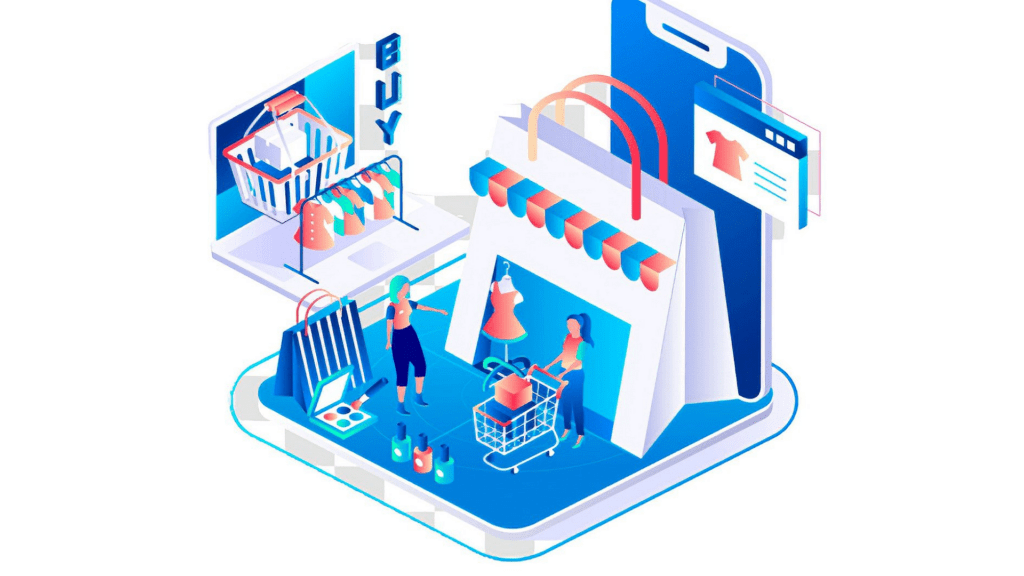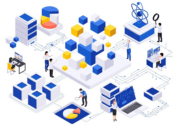
The insurance industry has been notoriously slow to embrace the world of technology and instead relied on in-person interactions to help build their business. However, there has been a profound shift in the past few years. Buyers now expect companies to have an active digital presence, no matter the industry.
As a result, insurers now realize how a digital transformation can benefit their businesses and customers. The customer journey is transforming rapidly, and how businesses respond to the buyer’s changing needs will determine how successful they are in the near future.
To meet this new expectation, insurance companies must have a coherent and long-term plan for implementing technology and innovation across their business. Businesses need to digitize fast to remain competitive with an increasingly mobile and tech-savvy market.
Here is what you need to know about how digital technology can enhance the customer journey and what tools can help insurers successfully improve their experience.
How Can Insurers Improve the Customer Journey with Digital Technology?

Digital technology has transformed and improved how businesses connect and relate to their customers. Technology enables a deeper and more empathetic understanding of the customer.
Digitalizing the experience
Customer experience is the critical differentiating factor for insurers in the digital era. It is crucial for increasing both customer acquisition and retention, leading to overall growth.
However, the experience that will drive growth involves more than a better user interface. It is about understanding the customer journey and using that to build a unique, engaging, and compelling experience that reduces any friction and makes your company easy to do business with.
Digitizing the customer experience will do just that. When customers can use their mobile app to answer a question, sign a contract or get a quote in minutes, you set yourself and refine the customer experience.
Driving sales with a customer-driven approach
Personalization and a customer-driven approach are critical differentiating factors across all industries. Consumer expectations have changed due to the increasing dependence on technology for everyday activities.
As a result, buyer experience is more important than ever. Research shows that customer experience now overtakes both price and product as brand differentiators.
Insurance companies can no longer avoid technology while they create a customer-driven approach. As more insurers build and develop apps, websites, and AI that can more conveniently and quickly meet the needs of their customers, those who cannot keep up will see their sales suffer.
Technology has transformed both business and buyer behavior. Insurers need to introduce user-friendly technology to keep up with these changes and improve the customer journey.
What technology is best for improving the customer journey and supporting sales? We have identified three critical tools for insurance companies to improve the buyer experience.
How Microservices Can Enhance the Customer Journey in Insurance

In the world of insurance, businesses need to respond to customer needs and changing conditions faster than ever. As a result, software applications need to deploy quickly, be low maintenance, and always be available. While traditional architecture can handle this somewhat, it is limited. Insurance companies require a scalable approach to their application development to support the future of their businesses.
Slow-moving legacy systems can’t keep up with the fast-changing insurance landscape and transformational shifts in customer expectations. Microservice architecture is one approach to improving the customer journey. They offer businesses a way to create applications with interchangeable, scalable, and upgradable parts. Tech giants such as Netflix, Amazon, PayPal, and Uber all created and scaled their platforms using the microservices architecture.
Here are some ways that microservices can improve the customer journey in insurance:
Flexibility in the cloud
Microservices are critical to flexible development and architecture. This means that businesses can choose the most appropriate tech stack for their services. They can decouple services written in various programming languages so that they can coexist with other fragments.
This means that it can be an ideal structure if an insurer needs to scale your solution in the future. Microservices allow businesses to add new components to the system. When insurers implement microservice-based application programming interfaces (or API), they extend their insurance back-end systems to the cloud quickly, cost-effectively, and with low risk.

Decreasing complexity
Microservices are generally responsible for dealing with one business domain that leads to a simplified unit that can evolve independently.
Microservices work by breaking up a monolithic legacy application into smaller and independent business practices. Companies can sidestep complex existing structures with microservices
Operate and evolve faster
Microservices enable developers and companies to introduce new features and enhancements without conflicts, and their implementations can technologically change and evolve to accommodate business needs. This means that businesses can use a technology that best fits their purposes.
Companies can sidestep complex existing monolithic legacy applications and access systems of record directly. Plus, businesses get it all done using familiar, open-standards tools with Java programmers.
This all helps ease the pains that can come when undergoing a digital transformation with an out-of-date IT stack and legacy systems. The various applications in legacy systems and decades of middleware can slow digitalization.
How to implement and operate with microservices

One common mistake that companies make when starting to implement microservices is tackling too many at once. Instead, insurers must start slowly and begin with a few services. They should focus on the most pressing issues where a few would create the most significant changes.
Most often, insurers are moving from monolith technology to microservices. Focus on breaking up a monolithic structure into microservices, then later make the microservices smaller if needed. It is simplest to create a separate service for customer services and then shift the database. The most common way companies move data is into separate microservices.
Choosing Quarkus as a Framework
Experts consider Quarkus the Java framework game-changer. As a full-stack and Kubernetes-native Java-based solution, it provides a great path to creating technology that will meet your customers on their journey.
Although Quarkus is relatively new to the scene, it has earned a lot of attention in the developer community. In fact, Quarkus was listed as one of the most rapidly growing Java projects in a recent developer survey.
It is an effective solution for running Java with serverless technology, microservices, the cloud, and containers. In fact, it was designed with these new technologies in mind.
Benefits of using Quarkus
Quarkus allows a number of benefits that help insurers improve the customer journey:
Improving Microservices
Quarkus enables companies to create serverless applications and write cloud-native microservices that run on cloud infrastructure like Kubernetes. It seamlessly merges the familiar imperative style code with the non-blocking and reactive style for developing microservices. It can adapt itself to whatever app the developer is building.
It was built around the needs of developers, which makes it easy to use. It offers features so that developers have minimal configuration issues while coding. This improvement in productivity for developers means that insurers can roll out improvements to their technology faster than ever and provide their customers with new innovations that enhance the user experience.
Containers-First approach
Quarkus was created with the container-first philosophy, which means that it is enhanced for faster startup times and lower memory usage. This is especially ideal for helping keep overall host costs down, whether an insurer uses an internally hosted Kubernetes cluster or on a public cloud.
It is one of the most efficient options for serverless and cloud environments. Containers are lightweight, offer faster startup times, scale quickly to meet business needs, and provide portability to run the application on any infrastructure.
Choosing Angular for the Frontend
Angular is a development platform trusted by many Big Tech companies and sponsored by Google. It allows businesses to create large-scale and complex frontends that scale. The platform includes:
- A suite of developer tools for building, testing, and updating code
- A collection of libraries for a number of features, such as forms management, client-server communication, and routing.
- A component-based framework that enables companies to scale their web applications.
Angular allows businesses to scale from single-developer projects all the way up to enterprise-level applications. Because of its many benefits, it continues to grow in popularity. In fact, it is one of the top frameworks used by developers worldwide.
Using Typescript with Angular
Angular is built using the programming language TypeScript. This is a significant advantage because it enables developers to maintain clean and understandable code. They can spot bugs more easily, making it faster to debug and making maintaining a large codebase easier. This is especially useful for scaling insurers to have large projects.
Because Angular is built in TypeScript, using that programming language will offer a seamless experience. It’s the preferred language for utilizing the framework application. As a superset of JavaScript, TypeScript maintains much of the language with some added bits and pieces.
Benefits of using Angular as a framework
There are a number of reasons why developers and insurers turn to Angular to create services that meet users on their customer journey. Some of the benefits of Angular include:
Functionality
Angular has everything that companies need right out of the box. Its pre configured environment enables not only the development of applications but facilitates testing as well.
With Angular, businesses won’t have to rely on third-party libraries to build their apps’ basic functionalities. The official library provided by Angular provides better cybersecurity and higher code quality.
Consistency
Unlike other popular platforms, such as React, Angular is an all-around web design framework. A critical feature of Angular there is one suggested approach to building components and services.
This enables consistency throughout the codebase so that new developers don’t wonder how something was built.
Angular offers a CLI tool that can build specific repeatable blocks of code from the command line to maintain consistency further. In addition, the framework documentation has an up-to-date reference that developers can utilize.
Faster Innovation
The increase in consistency enables developers to have greater productivity, which means innovations can roll out to users faster. Developers no longer have to find out what a component or function does. Instead, they can concentrate on rolling out updates and building applications.
Plus, Angular code is highly readable, so new developers can easily slot into any ongoing project that a business may have.
Modular Structure
Angular’s modular nature enables developers to divide code effectively into modules. This means that apps have better organization, and some of the code can be created in reusable chunks to reduce development time and cost.
In addition, Angular’s modular nature allows work to be divided amongst development teams so that the code remains organized and clean. It also ensures that applications can be scaled quickly and seamlessly.
Using Technology to Improve the Customer Journey
Insurers advance the buyers who matter and build resilient relationships that secure sustainable revenue streams with customer-centric technology. The right tools can enhance the journey to provide convenient solutions that help companies stand out from the competition.
Insurance companies now mostly rely on their customer experience and understanding the consumer journey. The technical tools that they use to enhance the user experience, enable innovation, and scale to maintain growth will have an incredible impact on their success for years to come. Microservices, Quarkus, and Angular are three of the most critical tools for insurers to improve their online customer journey and grow their businesses.
Looking for ways to transform your digital experience and land more sales? We can help. Speak to one of our RGI experts today to see how you can improve your technology to improve your customer journey.



